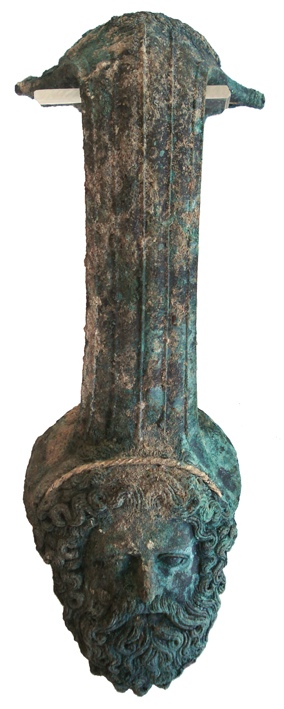A Matter of Class: 2,400-Year-Old Tombs Yield Ancient Aristocrats

A 2,400-year-old underground tomb complex, containing what appears to be an aristocratic family, has been discovered near the ancient city of Soloi in northern Cyprus.
The complex contains three burial chambers, two of which were intact while the third had been looted. In the unlooted chambers archaeologists found human remains as well as jewelry, figurines, weapons and a collection of 16 vessels used to serve people attending a "symposium," an event in the ancient world where men drank, talked and enjoyed entertainment.
One of the chambers held an intricate gold wreath in the shape of an ivy plant. The wreath's gold berries and thin gold leaves survived the passage of more than two millennia of time. [See Photos of the Gorgeous Treasures at Cyprus Tomb Complex]
The artifacts found in the tomb complex reveal trade between the ancient people of Soloi and Athens said archaeologist Hazar Kaba, who studied the tomb complex as part of his doctoral dissertation at Ankara University in Turkey.
"This tomb complex surely proves that Soloi was in direct relationship with Athens, who was the naval power of the period," Kaba said. "Soloi was supplying Athens with its rich timber and copper sources, and in return, was obtaining luxurious goods such as symposium vessels," he said, noting that artists from Athens appear to have taken up residence in Soloi, influencing the design of the artifacts made there.
Kaba also found connections with other regions. For instance, some of the jewelry and symposium vessels were decorated with designs similar to those found in the Achaemenid (Persian) Empire, which controlled much of the Middle East at the time the complex was constructed.
The gold wreath looks like wreaths that were placed in the tombs of Macedonian aristocrats, he said. Some of the symposium vessels had been imported from Ionia — a region in what is now the west coast of Turkey — and Macedonia.
Get the world’s most fascinating discoveries delivered straight to your inbox.
A few decades after the tombs were sealed off — between 400 and 350 B.C. — the Macedonians, under the leadership of Alexander the Great, would crush the Achaemenid Empire, conquering an area that stretched from the Balkans to Afghanistan.
Who was buried here?
One of the intact burial chambers contains the remains of a man, a woman and a little girl. Iron spearheads and a shield were buried with the man, Kaba said.
The second unlooted chamber contained the remains of a woman and a young girl, but no one else. The third chamber had been looted and was empty.
The people buried in the complex were likely from a wealthy aristocratic family, Kaba said. Right now researchers are trying to determine how the people buried in the complex were related to each other. "A DNA project is also running on the bones to identify the degree of kinship between the deceased," Kaba said.
Kaba is in the process of publishing four articles that discuss finds from the tomb complex. Excavations at the complex took place between 2005 and 2006. Conservation and restoration of the artifacts is ongoing.
Follow Live Science@livescience, Facebook & Google+. Original article on Live Science.

Owen Jarus is a regular contributor to Live Science who writes about archaeology and humans' past. He has also written for The Independent (UK), The Canadian Press (CP) and The Associated Press (AP), among others. Owen has a bachelor of arts degree from the University of Toronto and a journalism degree from Ryerson University.



